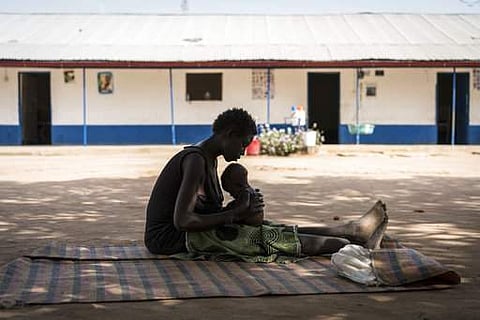

VIJAYAWADA/KURNOOL: Visakhapatnam has the highest percentage of malnourished children whereas Krishna district has the lowest percentage of such children, according to the State government's Growth Monitoring Detailed Report (GMDR).
The report, published under the YSR Sampoorna Poshana Scheme for June-2022, reflected the rate of underweight, wasted (low weight for height) and stunted (low height for age) children in the State. GMDR, formulated every month, is aimed at monitoring the health of children in government schools, based on three parameters classified into as many deficiencies: normal, moderate and severe.
The deficiencies and the percentage of underweight children (with severe differentiation) was 1.03 per cent, the report said. The percentage of severely wasted children was 1.12 per cent, and that of stunted children was 2.74.
Statistics revealed that Visakhapatnam district had the highest percentage of 2.40 underweight children and Krishna recorded the lowest of 0.44 per cent. Visakhapatnam topped the list again with 2.18 per cent of wasted children. Krishna reported the lowest of 0.39 per cent.
The highest percentage of 7.27 per cent of severely stunted children, too, was from Visakhapatnam district and the lowest percentage of 0.99 was recorded in Krishna District. The study was conducted among 26,20,797 children registered with the Sampoorna Poshana scheme and 67,866 migrant children.
The height and weight of 25,88,707 children were measured. The move found 26,686 children to be severely underweight, 28,949 severely wasted and 70,843 severely stunted. The report, however, did not mention the details of overweight children. The condition of being underweight could weaken the child’s immune system, experts said.
According to the National Family Health Survey (NFHS)-5 2019-20, rural areas in the State had more stunted children (34.2 per cent) aged below five, wasted in urban areas (17.6 per cent), severely wasted (6.4 per cent) in urban, underweight in rural (31.4 per cent) and overweight in urban (3.0 per cent).
Compared to NFHS-4 (2015-16), the rate of stunted, wasted, underweight children has decreased while the rate of severely wasted and overweight gradually increased.
Dr G Swarupa, Consultant Dietician, Andhra Hospitals in Vijayawada said underweight children would be more in the age of pre-primary school students. "One of the main reasons is the lack of awareness among mothers to take sufficient nutritious food. However, mothers should come out of diet restrictions after giving birth to a baby. If the mother is malnourished, the children will also suffer," she said.
Stunted children seldom mingle with other kids and go to school or play. The morbidity and mortality rate would be more in wasted children, who risk developing severe chronic diseases at a younger age, added Dr Swarupa.
Kurnool district Women and Children Welfare Department project director KLRK Kumari said they have initiated a special drive to check the health index and also the working condition of the weighing and measuring devices for getting accurate details.
She said that they were concentrating on children's growth and also educating the staff of anganwadi on nutritious food, besides motivating parents to send children to Nutrition Rehabilitation Centre (NRC) available in every district to take special care of malnourished kids.